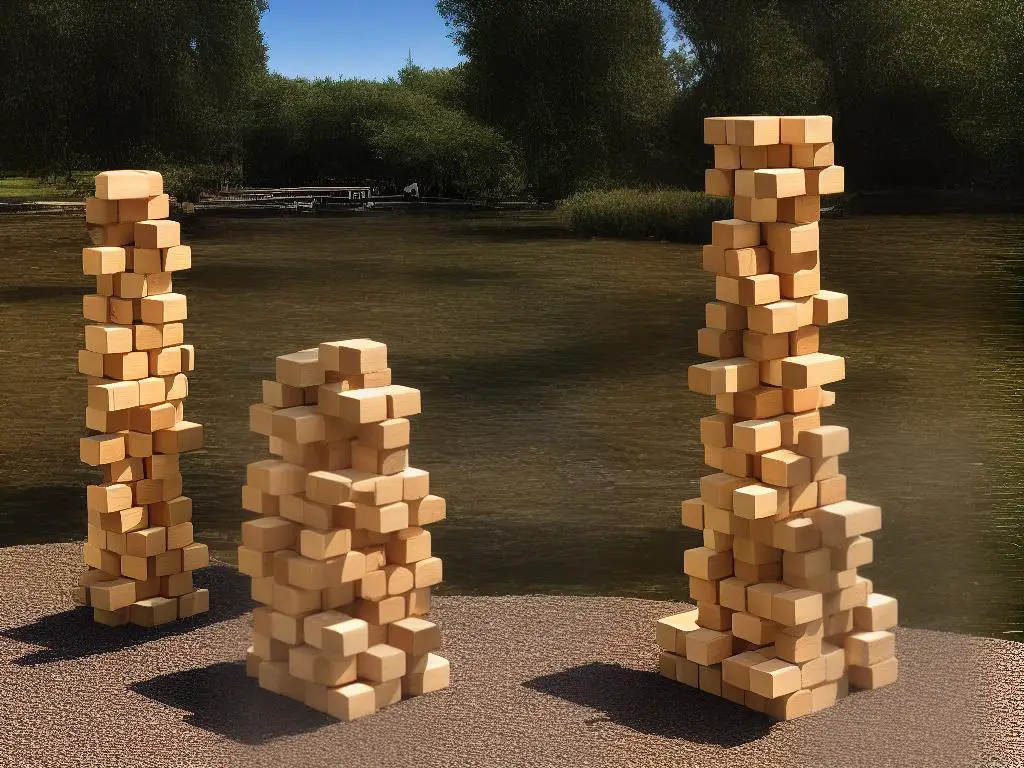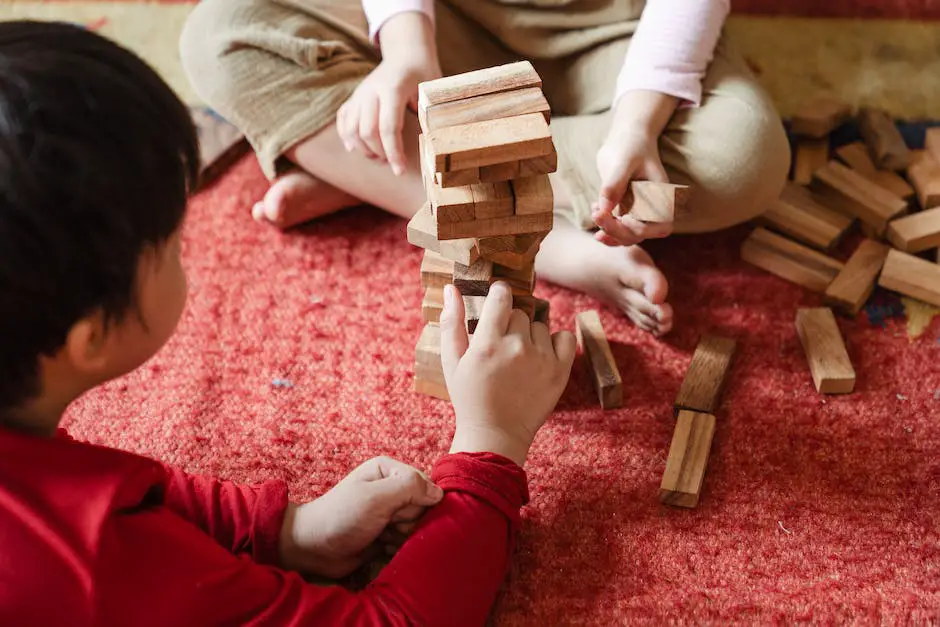Introduced in the 1970s, Jenga is a game of strategy, focus, and precision that has captivated audiences worldwide. Yet, its true charm comes from its ability to be modified, serving as a melting pot for innumerable variants, one of which includes the popular Jenga drinking game. Its appeal lies in its fusion of the classic Jenga rules with the additional twist of drinking rules, augmenting the stakes and the excitement involved. This article makes an attempt to navigate through the enthralling world of the Jenga drinking game, starting from understanding the traditional Jenga basics, crafting engaging drinking rules and finally, putting it all into practice.
Understanding Jenga’s Basics
Understanding Jenga: The Basics
Jenga is a classic block-stacking game that can add more fun and thrill to your parties, especially when configured into a drinking game. To play Jenga drinking game, the preliminary stage involves studying the basic rules of the game.
Set Up the Tower
Start by arranging the Jenga tower. This involves stacking 54 wooden blocks in sets of three, arranged in right angles to the previous layer, up to 18 levels high. Each layer’s three blocks should be parallel to each other, creating a sturdy, rectangular shape. The tower should be set up on a flat surface to prevent it from falling prematurely.
Understand the Rules
The game is typically played with a minimum of two players, but there isn’t really a maximum. The first player to start is determined by a game of rock, paper, scissors, and play proceeds clockwise. Players take turns carefully removing a single block from any level of the tower, except the one below an incomplete top level and trying to place it on the topmost level to complete it.
The game continues with players choosing blocks and stacking them. The object of the game is to avoid being the person who makes the tower fall. If the tower falls during your turn, you lose.
Incorporate Drinking Rules
To make Jenga a drinking game, you need to assign various rules to each block. You can do this by writing different challenges or amounts of drinks they must take on the blocks. For instance, you can write “Take two drinks” or “Start a waterfall” on different blocks. Thus, the player who pulls the block will have to perform whatever instruction is written on it.
Strategize to Win
While the steps to play Jenga are straightforward, it’s a game that demands a tactical approach. Effective strategies primarily include limiting one’s movements to minimize the shaking of the tower, using only one hand at a time to remove a block, and attempting slower, calculated actions rather than quick moves.
In the end, the player who successfully keeps the tower from falling wins the game. Armed with these basics, you’re all set to play and enjoy the Jenga drinking game. It is a great way of adding some playful competition and laughs into any get-together.
Remember, drink responsibly and enjoy the game.

Crafting Drinking Rules
Introduction: The Ultimate Twist on Jenga
Jenga, a classic game of skill and precision, becomes all the more fun with a little twist. Introducing Jenga Drinking Game: a fun, yet responsible way to add some zing to your parties! Before we dive in, remember, the key to a good drinking game is a delicate balance between fun and safety.
Creating Basic Rules
First, familiarize yourself with the traditional Jenga rules, then proceed to add the drinking component. Here’s how you can introduce penalties and rewards associated with the removal and placement of blocks:
-
Block Removal Penalties: If a player successfully removes a block, they nominate someone else to take a drink. If they knock the tower over, they have to finish their drink.
-
Block Placement Rewards: If a player successfully places a block on the tower, they can make a rule that lasts until their next turn. For example, “no one can say the word ‘drink’ until my next turn. If they do, they must take a sip of their drink.”
Designating Blocks
A more complex and exciting variant of the Jenga Drinking Game involves designating specific actions or rules to individual blocks. You’ll need a permanent marker for this. Here’s how:
-
Write a rule on each block. These rules can involve a drink penalty, reward, or even a fun mini game.
-
Each time a player pulls out a block, they must perform the action written on it.
Some example rules might include:
- “Player must take two drinks.”
- “Player can hand out three drinks to any other players.”
- “Player must play the next turn blindfolded.”
Maintaining Balance and Safety
The key to a successful and enjoyable drinking game is maintaining a balance between fun and safety. It’s important to remember that the point of a drinking game is not who can drink the most but who can have the most fun. To ensure safety:
-
Avoid putting excessive drinking penalties on a block. It’s not fun if someone is getting hammered while others are barely sipping their drinks.
-
Encourage responsible drinking. If someone is showing signs of being too intoxicated, stop the game.
-
Always provide plenty of water and non-alcoholic options.
-
Never force anyone to drink, especially those who are driving. No game is worth jeopardizing safety.
Now that you have your rules in line, it’s time to let the blocks tumble and the good times roll. Remember, always drink responsibly and ensure your guests do, too. Jenga Drinking Game is all about having fun, laughing, and creating memorable moments with friends. So, go ahead and make your next get-together an epic night to remember!

Practicing the Game
Understanding the Basics of Jenga Drinking Game
The first part of your journey in learning the Jenga Drinking Game lies in ensuring that everyone participating has a clear idea about the original game. Jenga, a strategic block-stack game, requires players to stack wooden blocks into a sturdy tower and then remove individual blocks without causing the tower to fall.
Setting Up the Game
Start by building the Jenga tower on a stable, flat surface. Place the blocks three across until you have stacked all of them. Remember, the blocks that have drinking actions should be put randomly within the tower, with the actions facing down to keep them hidden until chosen.
Playing the Jenga Drinking Game
Take turns in a clockwise manner to remove a single block from any level of the tower (except the topmost, completed level). Carefully read the actions written on the block and perform them. If the block doesn’t contain any drinking command, that can be considered a “safe” turn.
Everyone should remember: remove a block, perform the action, place the block on top of the tower, then pass the turn.
What Happens If the Tower Falls?
According to the rules that are often associated with the Jenga Drinking Game, if a player makes the tower fall on their turn, they must finish their drink. However, if the tower falls due to the instability caused by the last block that was placed, the player who placed that block must also take a penalty drink.
Refining the Rules
After you have played a test round, gather everyone together to discuss the game. Were the rules clear and fair? Did everyone have a good time? If not, try to identify what might have hindered the enjoyment of the game and adjust the rules accordingly. This is your chance to refine the rules and make the game more interesting and fun.
Remember: the goal of playing the Jenga Drinking Game is to have fun. So, always ensure that everyone at the party is comfortable with all the rules and responsibilities. The game, like any other drinking game, should remain entertaining and enjoyable to everyone.

Reimagining Jenga with a touch of cheer and camaraderie, the Jenga drinking game takes the traditional game a notch higher! But like any game, understanding the basics, setting the rules, and gaining some practice, lays the foundation for an enjoyable experience. Once you’ve armed yourself with the essentials, you’ll be all set to invite your friends over for a memorable Jenga drinking game night. The game is bound to bring you a barrel of laughs, encourage friendly banter, and unleash your competitive spirits while also ensuring everyone’s safety.